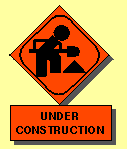Welcome to the book Tobacco and the Diseases It Produces (1875), by Charles R. Drysdale, M.D., F.R.S. To go to the "Table of Contents" immediately, click here.
Tobacco pushers and their accessories conceal the breadth of tobacco effects, the enormity of the tobacco holocaust, and the long record of documentation.
The concealment process is called the "tobacco taboo." Other pertinent words are "censorship" and "disinformation."
Here is the text by Charles R. Drysdale, M.D., F.R.S. (1829-1907) of an early exposé (1875) of tobacco dangers. It cites facts you rarely ever see, due to the "tobacco taboo."
The phrase "tobacco taboo" is the term for the pro-tobacco censorship policy—to not report most facts about tobacco.
As you will see, information about the tobacco danger was already being circulated in 1875, 96 years before the famous 1964 Surgeon General Report. Be prepared. |
